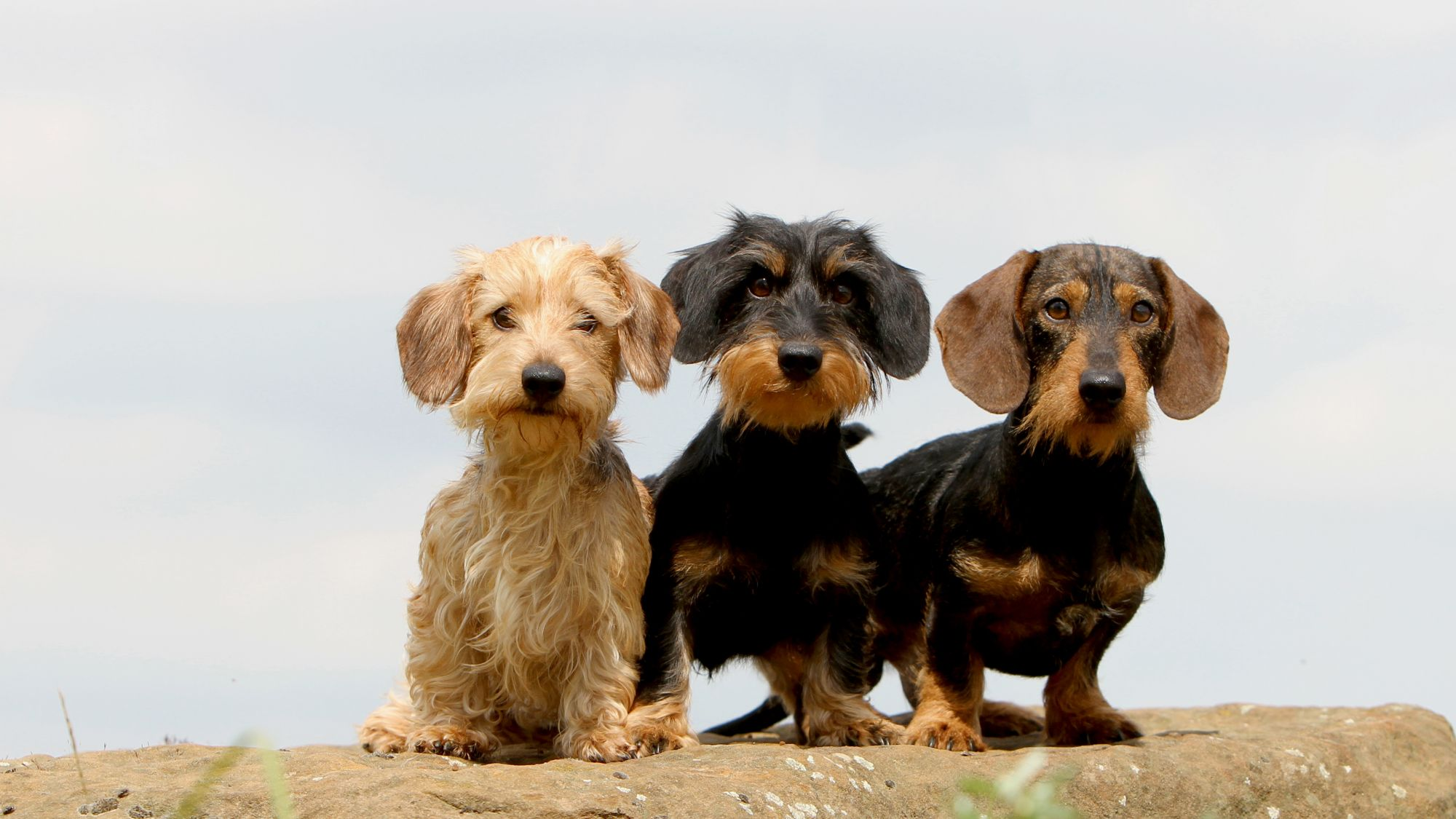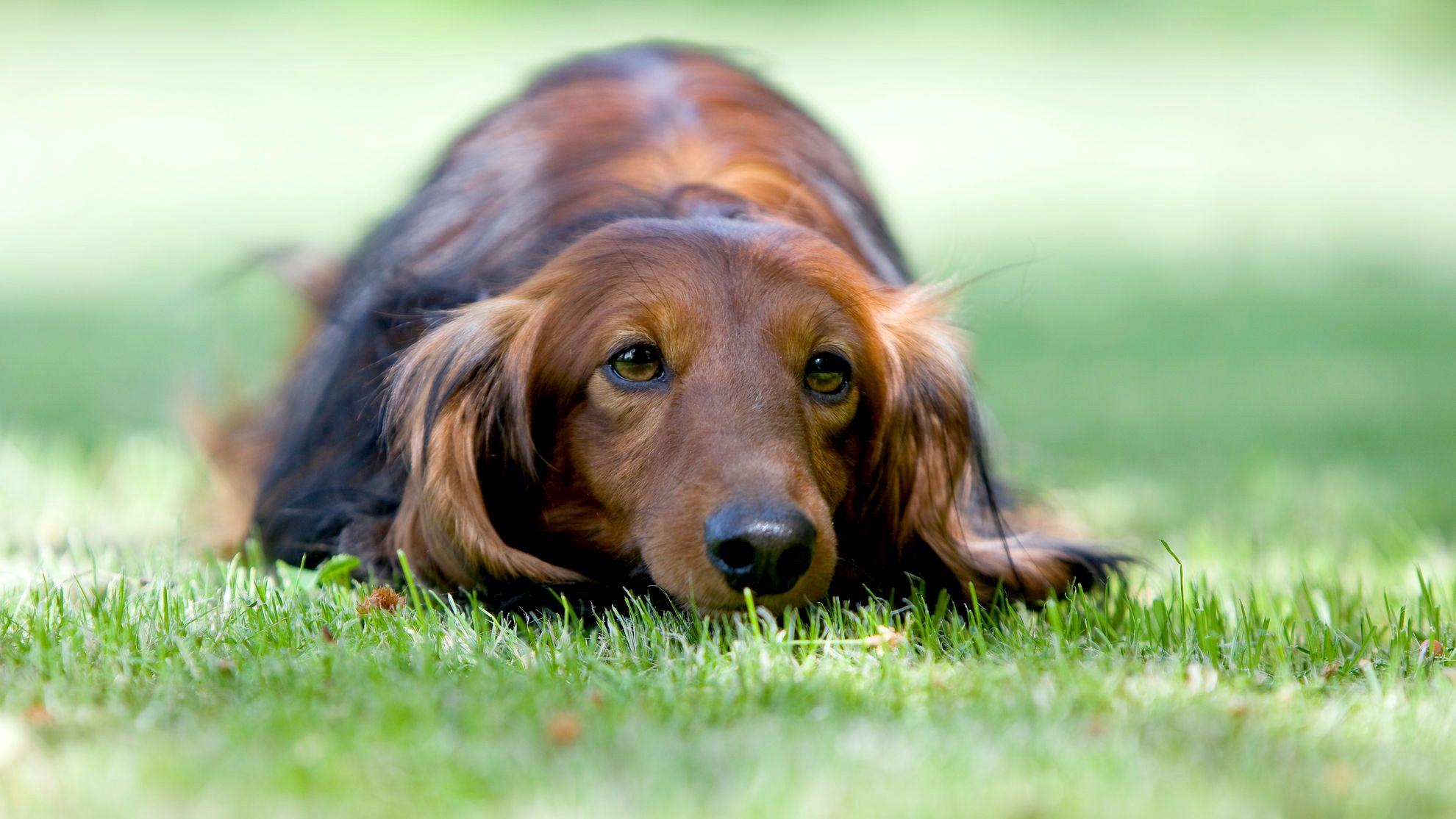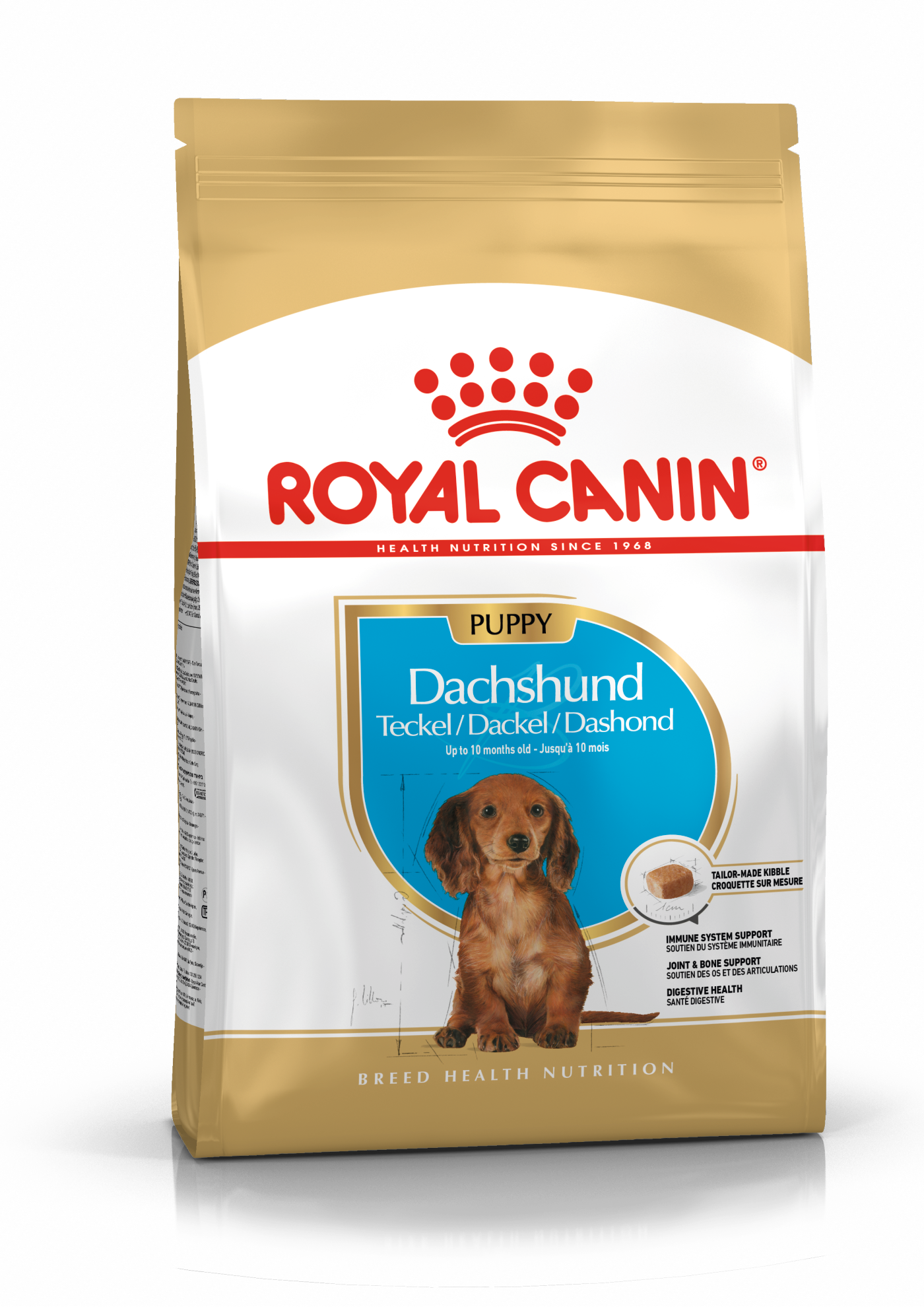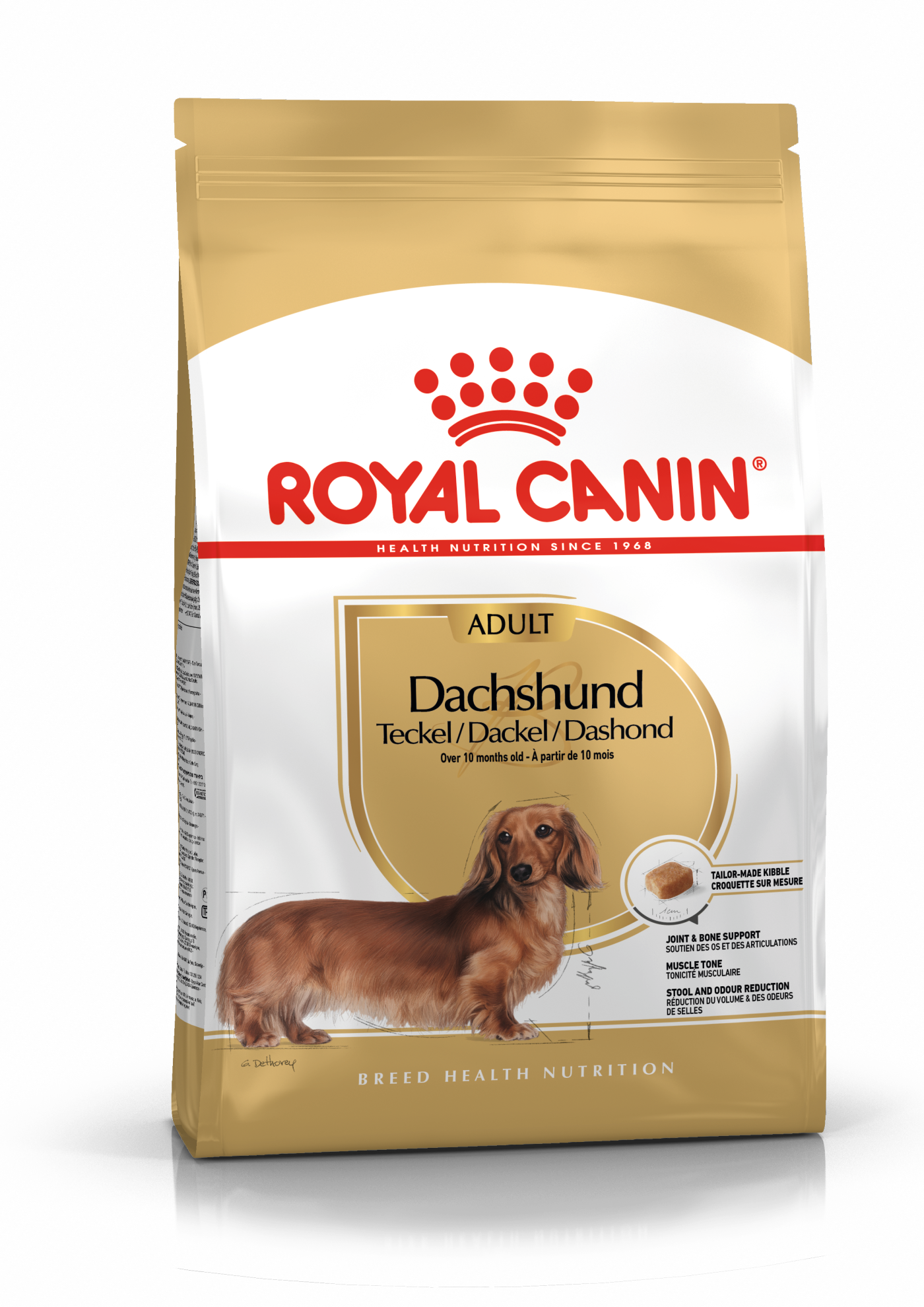Cùng nói về chó Dachshund lông dài tiêu chuẩn nhé
Tên chính thức: Chó Dachshund lông dài tiêu chuẩn
Các tên khác: Chó Doxie, Dashie, Badger
Nguồn gốc: Germany
Xu hướng chảy nước dãi
1 out of 5Nhu cầu chải chuốt
4 out of 5Mức độ rụng lông
3 out of 5Xu hướng sủa
3 out of 5Mức năng lượng*
3 out of 5Khả năng hòa đồng với các thú cưng khác
2 out of 5Thời tiết ấm áp?
3 out of 5Thời tiết lạnh?
1 out of 5Phù hợp với cuộc sống căn hộ?
3 out of 5Có thể ở một mình?*
3 out of 5Thú cưng trong gia đình?*
2 out of 5
| Male | Female |
|---|---|
| Height | Height |
| 37 - 47 cm | 35 - 45 cm |
| Weight | Weight |
| 9 - 12 kg | 9 - 12 kg |
| Life stages | |
|---|---|
| Tuổi chó con | Tuổi trưởng thành về sinh lý |
| 2 đến 10 tháng | 10 tháng đến 8 tuổi |
| Tuổi trưởng thành về tâm lý | Lớn tuổi |
| 8 đến 12 năm | Từ 12 tuổi |
| Tuổi sơ sinh | |
| Từ lúc sinh ra đến 2 tháng | |

Tìm hiểu về giống chó Dachshund lông dài tiêu chuẩn
Tất cả những gì bạn cần biết về giống chó này
Chó Dachshund lông dài tiêu chuẩn là một giống chó dễ nuôi. Dạn dĩ và giàu năng lượng, chúng luôn sẵn sàng với bất kỳ trò chơi nào mà bạn nghĩ ra. Luôn luôn. Chú chó Dachshund tình cảm sẽ luôn ở bên cạnh bạn. Giống chó này nổi tiếng là rất nồng nhiệt. Tuổi thọ của chó Dachshund lông dài là khoảng 12-16 năm, tức là chú chó này sẽ ở bên bạn rất lâu.
Dù rất mạnh mẽ nhưng giống chó này sẽ không phải là người bạn đồng hành trong một cuộc chạy đua marathon. Mỗi ngày, bạn chỉ cần cho chó dạo chơi chốc lát quanh khu nhà để giữ cho chiếc thân dài và đôi chân nhỏ nhắn luôn khỏe mạnh.
Chó Dachshund có 3 kiểu lông: Lông cứng, Lông mượt và Lông dài. Chó Dachshund cũng có ba kích thước: Nhỏ, Tiêu chuẩn và Kaninchen. Giống Kaninchen có ngực lớn hơn (11,8 inch) và trọng lượng không quá 7,7 lb. Kaninchen trong tiếng Đức có nghĩa là “thỏ”. Giống chó này chuyên săn tìm thỏ hoặc các động vật nhỏ khác. Những người yêu thích giống chó này thường gọi các chú chó có trọng lượng từ 11-16 lb là “tweenies”. Tuy nhiên, không có bất kỳ câu lạc bộ chó kiểng nào công nhận nhóm chó này.
Giống chó Dachshund có tinh thần độc lập nhưng chúng không hề xa cách. Ngược lại, chúng rất gắn bó với một người. Điều quan trọng là phải huấn luyện chó Dachshund lông dài đúng cách để đảm bảo chúng thân thiện hết mức có thể và không cắn những người lạ. Với truyền thống là một giống chó thể thao ngoài trời, chó Dachshund lông dài tiêu chuẩn có tính cách ngoan cường, dễ làm quen với chuồng và giúp đỡ khi cần thiết.
Nói đến công việc, đây là giống chó thích làm nhiệm vụ và sẵn sàng hỗ trợ bạn. Chúng thường có tính cách can đảm và điều không ngờ tới là một giống chó nhỏ như vậy lại có tiếng sủa rất lớn - thậm chí nghe như tiếng sủa của một chú chó cỡ đại.
Chó Dachshund lông dài tiêu chuẩn cần được giữ ấm vì cơ thể bé nhỏ của chúng không chịu được lạnh. Bạn nên mua đồ dùng mùa đông thích hợp cho chó. Chó Dachshund nhất định sẽ rất thích thú đấy.

2 sự thật về chó Dachshund lông dài tiêu chuẩn
1. Chó Dachshund có thể nghi ngờ người lạ
Là một giống chó ngọt ngào, chó Dachshund lông dài tiêu chuẩn có tính cách rất khác biệt, đặc biệt là với những người mới đến, do khả năng gắn bó của chúng với một người rất mạnh. Hãy giúp chú chó của bạn hòa nhập xã hội sớm để chúng phát triển đầy đủ khía cạnh đáng yêu của mình.
2. Hai trong một: Kích thước nhỏ nhưng tiếng sủa lớn
Dù kích thước nhỏ bé nhưng chó Dachshund lông dài tiêu chuẩn có tiếng sủa lớn do vai trò của chúng trong việc đánh bẫy: Sau khi đào sâu xuống lòng đất để kiếm mồi, chúng sủa lớn để thông báo cho người đi săn biết rằng có thể chúng đã tìm thấy thứ gì đó thú vị ở bên dưới.
Lịch sử của giống này
Tổ tiên của chó Dachshund lông dài tiêu chuẩn là một giống chó quý tộc có nguồn gốc từ Đức, nơi chúng là niềm tự hào quốc gia. Giống chó này rất thích hợp cho các môn thể thao ngoài trời, thuộc Giống chó săn được lai tạo từ chó Bassett Đức hơn 6 thế kỷ trước. Câu lạc bộ chó Dachshund của Đức được thành lập vào năm 1888 và chó Dachshund có tên trong sổ giống của Câu lạc bộ Chó kiểng Mỹ từ năm 1885.
Là một giống chó nhỏ nhưng chúng lại có tiếng sủa lớn, nghe giống như tiếng sủa của giống chó lớn hơn. Tiếng sủa đặc trưng của chó Dachshund lông dài tiêu chuẩn hình thành do chúng là chó thể thao ngoài trời, nhằm cho các thợ săn biết vị trí của chó khi chúng đào bới con mồi ở sâu dưới đất. Nhờ bản tính kiên định, chúng thường được tập hợp thành bầy để săn tìm những con thú có kích thước lớn hơn nhiều như lợn rừng.
Do ác cảm với người Đức sau Thế chiến II, có thời gian những người Mỹ yêu thích giống chó Dachshund thân thiện này đã đổi tên chúng thành Chó săn Tự do. May mắn thay, chúng chưa bao giờ mất đi tên của mình. Cuối cùng thì chó Dachshund đã trở thành biểu tượng quốc gia của Đức. Giống chó điềm đạm này giờ đã được yêu mến trên toàn thế giới.
Từ đầu đến đuôi
Đặc điểm thể chất của chó Dachshund lông dài tiêu chuẩn
1.Tai
2.Cái đầu
3.Thân hình
4.Lông thú
5.Đuôi

Những điều cần chú ý
Từ đặc điểm giống cụ thể đến tổng quan chung về sức khỏe, đây là một số sự thật thú vị về chú chó Dachshund lông dài tiêu chuẩn của bạn
Đừng để chú chó Dachshund của bạn nhảy quá nhiều
Hãy chăm sóc để đảm bảo chú chó Dachshund lông dài tiêu chuẩn của bạn không thực hiện những chuyển động có vẻ bình thường hoặc mang tính thể thao như bật nhảy từ đồ đạc hay leo cầu thang. Những điều này nghe có vẻ vô hại, nhưng chó Dachshund lông dài tiêu chuẩn dễ bị thương vì chúng có lưng dài, chân ngắn nên không thể chịu áp lực lớn từ phần thân dài. Hãy để mắt đến chú chó của bạn để chúng không có bất kỳ chuyển động nào có thể khiến cơ thể chúng bị thương. Bạn cũng nên cho chó tập thể dục thường xuyên để lưng và chân chúng luôn khỏe mạnh.
Chúng rất mê săn mồi vào đào bới
Chó Dachshund lông dài tiêu chuẩn thích đồng ruộng, là giống chó thể thao nguyên bản nên thường mang những đặc điểm bẩm sinh như thích đào bới. Khi ở nhà, có thể chú chó của bạn sẽ đào bới cây cối trong vườn hoặc thậm chí là quần áo và đồ dùng cá nhân, chỉ để thỏa mãn xu hướng bẩm sinh này. Chúng có chân nhỏ nhắn, răng và móng vuốt siêu sắc nên rất giỏi nhiệm vụ này. Vì chúng có tính cách bẩm sinh là nghe lời nên bạn có thể huấn luyện để chúng giảm bớt xu hướng này. Nếu bạn huấn luyện từ sớm, chú chó của bạn sẽ rất ngoan ngoãn.
Dễ bị động kinh
Chó Dachshund lông dài tiêu chuẩn là một giống chó khỏe mạnh nhưng có thể dễ lên cơn động kinh. Nguyên nhân của tình trạng này là do di truyền và là chứng rối loạn thần kinh mãn tính, có đặc điểm là co giật, run và co cơ. Ban đầu, các cơn động kinh có rất ít dấu hiệu cảnh báo, thường tự qua đi nhanh chóng. Hãy giữ bình tĩnh khi chúng lên cơn động kinh vì điều này thường qua đi khá nhanh và chú chó của bạn thường không nhận thức được vấn đề khi nó diễn ra. Hãy chú tâm theo dõi khi cơn động kinh xảy ra để có thể truyền đạt thông tin về chú chó Dachshund lông dài tiêu chuẩn cho bác sĩ thú y. Như với tất cả các bệnh khác, việc phát hiện sớm có ý nghĩa then chốt. Bạn nên đưa chó đến bác sĩ thú y khám định kỳ để theo dõi tình hình. Thông thường, chúng ta có thể kiểm soát bệnh động kinh bằng thuốc.
Chế độ ăn uống lành mạnh, chó khỏe mạnh hơn

Khi chọn thực phẩm cho chó Dachshund, có nhiều yếu tố cần xem xét: their age, lifestyle, activity level, physiological condition, and health including potential sickness or sensitivities. Food provides energy to cover a dog’s vital functions, and a complete nutritional formula should contain an adjusted balance of nutrients to avoid any deficiency or excess in their diet, both of which could have adverse effects on the dog. Clean and fresh water should be available at all times to support your dog’s urinary health. In hot weather and especially when out exercising, bring water along for your dog’s frequent water breaks. The following recommendations are for healthy animals. If your dog has health problems, please consult your veterinarian who will prescribe an exclusive veterinary diet.
Yêu cầu của một chú chó con thuộc giống chó Dachshund, về năng lượng, protein, khoáng chất và vitamin, lớn hơn nhiều so với chó trưởng thành. They need energy and nutrients to maintain their body, but also to grow and build it. Cho đến khi được 10 tháng tuổi, hệ miễn dịch của chó con thuộc giống chó Dachshund phát triển dần dần. A complex of antioxidants - including vitamin E - can help support their natural defences during this time of big changes, discoveries, and new encounters. Chức năng tiêu hóa của chúng cũng khác với chó Dachshund trưởng thành: their digestive system is not mature yet so it’s important to provide highly digestible proteins that will be effectively used. Prebiotic, chẳng hạn như fructo-oligosaccharides, hỗ trợ sức khỏe tiêu hóa bằng cách giúp cân bằng hệ thực vật đường ruột, dẫn đến chất lượng phân tốt.
Similarly, a puppy’s teeth – starting with the milk teeth, or first teeth, then the permanent teeth – are an important factor that needs to be taken into account when choosing the size, form, and hardness of kibble. Giai đoạn phát triển mạnh mẽ này cũng đồng nghĩa với nhu cầu năng lượng cao, vì vậy thực phẩm phải có hàm lượng năng lượng cao (thể hiện trong Kcal/100g thực phẩm), trong khi nồng độ của tất cả các chất dinh dưỡng khác cũng sẽ được điều chỉnh cẩn thận, đặc biệt là hàm lượng canxi và phốt pho hỗ trợ cho xương và khớp của chó con thuộc giống chó Dachshund. It is recommended to split the daily allowance into three meals until they are six months old, then to switch to two meals per day.

Mục tiêu dinh dưỡng chính cho chó Dachshund trưởng thành là:
Hỗ trợ xương và khớp với hàm lượng canxi và phốt pho được điều chỉnh, cùng các chất dinh dưỡng như glucosamine và chondroitin.
Duy trì trương lực và trọng lượng cơ thể lý tưởng bằng cách sử dụng các thành phần dễ tiêu hóa và giữ hàm lượng chất béo ở mức hợp lý.
Bảo vệ sức khỏe và vẻ đẹp của da cũng như bộ lông bằng việc bổ sung các axit béo thiết yếu (đặc biệt là EPA-DHA), các axit amin thiết yếu và vitamin B.
Ở tuổi trưởng thành, chó giống nhỏ dễ mắc các rối loạn về răng miệng, cụ thể hơn là tình trạng tích tụ mảng bám và cao răng. Răng và hàm của chó Dachshund cần được bảo vệ kỹ lưỡng. Thức ăn hạt nhỏ đặc biệt và kết cấu được thiết kế để thúc đẩy khả năng nhai có thể giúp làm chậm quá trình hình thành mảng bám răng và công thức có chứa canxi chelate có thể giúp giảm sự hình thành cao răng, do đó giúp hỗ trợ vệ sinh răng miệng hàng ngày. Chó giống nhỏ nổi tiếng là kén ăn. Công thức và hương vị độc quyền, cũng như kích thước hạt có kết cấu đặc biệt, sẽ kích thích sự thèm ăn của chúng. Chó giống nhỏ dễ bị sỏi tiết niệu, nên có chế độ ăn uống hỗ trợ hệ thống tiết niệu khỏe mạnh để ngăn ngừa sỏi tiết niệu.
Đối với chó Dachshund sống chủ yếu trong nhà, protein dễ tiêu hóa, hàm lượng chất xơ thích hợp và nguồn carbohydrate chất lượng cao sẽ giúp giảm mùi và khối lượng phân. Vì lối sống trong nhà thường có nghĩa là ít vận động hơn, nên hàm lượng calo thích hợp, đáp ứng nhu cầu năng lượng giảm và chế độ ăn có chứa L-carnitine, thúc đẩy quá trình chuyển hóa chất béo, có thể giúp duy trì cân nặng lý tưởng. Điều quan trọng là tránh cho chúng ăn thức ăn của người hoặc đồ ăn nhẹ nhiều chất béo. Thay vào đó, hãy thưởng cho chó của bạn bằng thức ăn viên lấy từ khẩu phần ăn hàng ngày của chúng và tuân thủ nghiêm ngặt hướng dẫn cho ăn được ghi trên bao bì để ngăn ngừa tăng cân quá mức.

Sau 8 tuổi, chó Dachshund bắt đầu phải đối mặt với những dấu hiệu lão hóa đầu tiên. Một công thức giàu chất chống oxy hóa sẽ giúp duy trì sức sống của chúng và hàm lượng phốt pho thích hợp sẽ hỗ trợ hệ thống thận của chúng. Quá trình lão hóa cũng đi kèm với sự thay đổi về chức năng tiêu hóa và các nhu cầu dinh dưỡng cụ thể, vì thế thức ăn cho chó Dachshund lớn tuổi phải có các đặc điểm sau:
Hàm lượng vitamin C và E cao hơn. Những chất dinh dưỡng này có các đặc tính chống oxy hóa, giúp bảo vệ các tế bào của cơ thể khỏi những tác hại của tình trạng mất cân bằng oxy hóa do lão hóa.
EPA-DHA cùng với hàm lượng canxi và phốt pho chính xác để hỗ trợ xương khớp của chó Dachshund. Chó Dachshund có chi và đốt sống ngắn nên thường bị căng khớp cơ học nhiều hơn so với các giống chó khác.
Các chất dinh dưỡng và calo được điều chỉnh so với chế độ ăn uống của chó trưởng thành sẽ giúp duy trì trọng lượng lý tưởng của chó Dachshund đang lớn. Việc tăng trọng lượng quá mức có thể ảnh hưởng đến sức khỏe của chó Dachshund, vì vậy, cần có một chế độ ăn uống cân bằng hợp lý để duy trì sức khỏe tối ưu.
Tỷ lệ các nguyên tố vi lượng sắt, kẽm và mangan cao hơn sẽ giúp duy trì tình trạng khỏe mạnh cho da và lông
Protein chất lượng cao. Trái ngược với quan niệm sai lầm phổ biến, việc giảm hàm lượng protein trong thực phẩm mang lại ít lợi ích trong việc hạn chế suy thận. Ngoài ra, chó già sử dụng protein trong chế độ ăn kém hiệu quả hơn chó trẻ. Giảm hàm lượng phốt pho là một cách tốt để làm chậm sự suy giảm dần của chức năng thận.
Khi già đi, chó thường gặp các vấn đề về răng. Để giúp chó tiếp tục ăn đủ lượng thức ăn, bạn cần phải đảm bảo hình dạng, kích thước và độ cứng của thức ăn hạt phù hợp với hàm của chúng. Có thể làm mềm thức ăn hạt bằng nước ấm để dễ ăn hơn.

Chăm sóc cho chó Dachshund lông dài tiêu chuẩn
Mẹo chăm sóc lông, huấn luyện và tập thể dục
Là một vận động viên bẩm sinh, chó Dachshund lông dài tiêu chuẩn cần phải duy trì thói quen huấn luyện mạnh mẽ của chúng! Cơ thể khỏe mạnh và giàu năng lượng, cần tập luyện tích cực như chú chó tiếp theo. Nên cho chúng đi bộ 2 lần mỗi ngày nhưng không nên chạy bộ quá lâu; Chó Dachshund lông dài tiêu chuẩn không thích chạy. Một khoảng sân có hàng rào là đủ không gian để giống chó này chạy nhảy tùy theo ý muốn của chúng. Chó Dachshund không giỏi bật nhảy. Chiếc lưng dài của chúng dễ bị tổn thương và chân ngắn nên chuyển động đột ngột từ trên cao có thể khiến chúng gặp rủi ro nghiêm trọng.
Chó Dachshund lông dài tiêu chuẩn được biết đến với bộ lông ngắn và mượt, thường rất bóng nếu được chăm sóc đúng cách. Việc chải lông hai lần mỗi tuần cho chú chó Dachshund sẽ giữ cho chúng được chải lông đầy đủ và chỉ tắm khi cần thiết để bộ lông ở trạng thái khỏe mạnh. Nên cắt móng 1-2 lần/tháng. Tuy nhiên, bạn nên đánh răng cho chó ít nhất 2-3 lần/tuần hoặc hàng ngày nếu có điều kiện.
Mặc dù được biết đến với tính cách gan lỳ, chó Dachshund lông dài tiêu chuẩn rất dễ huấn luyện, đặc biệt là một chú chó tìm được niềm an ủi khi gắn kết với một người. Vì có nền tảng thể thao nên giống chó này thích đào, sục, cào. Do đó, việc huấn luyện nên bắt đầu sớm và được duy trì. Vì chúng khá cứng cỏi nên bạn cần kiên nhẫn! Chó Dachshund lông dài tiêu chuẩn có một số đặc điểm như dũng cảm và táo bạo, vậy nên chúng cần biết được ai đang kiểm soát. Tính độc lập là một điểm cộng nhưng hãy đảm bảo rằng điều đó không khiến chúng đi lang thang. Chó Dachshund thường hòa thuận với những loài chó và mèo khác trong nhà nhưng đôi khi, chúng có thể cần cảm giác làm chủ tình hình.
7/7
Tất tần tật về chó Dachshund lông dài tiêu chuẩn
Read more on this topic
Nguồn
- Veterinary Centers of America https://vcahospitals.com/;
- Royal Canin Dog Encyclopaedia. Ed 2010 and 2020
- Banfield Pet Hospital https://www.banfield.com/
- Sách về sản phẩm BHN của Royal Canin
- Câu lạc bộ chó Kiểng Mỹ https://www.akc.org/
Thích và chia sẻ trang này